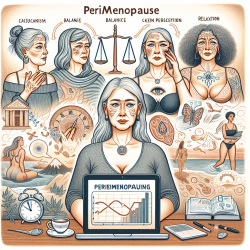Tobacco use among adolescents is a pressing public health concern. While the prevalence of smoking has declined in recent years, certain groups remain at higher risk. The study "Risk and Protective Factors for Tobacco Use Among 8th- and 10th-Grade African American Students in Virginia" sheds light on the unique factors influencing tobacco use among African American youth. This research provides valuable insights that can help practitioners develop more effective prevention programs.
Understanding Risk and Protective Factors
The study analyzed data from 1,056 African American students in Virginia to identify key risk and protective factors associated with smoking. The findings revealed several important insights:
- Academic Achievement: Low academic achievement emerged as a significant predictor of smoking among African American youth. This suggests that enhancing academic performance could be a crucial component of prevention efforts.
- Peer Influence: Peer drug use was identified as a strong predictor of smoking. Adolescents who associate with peers who use drugs are more likely to smoke themselves.
- School Rewards for Prosocial Behavior: This was the only protective factor identified in the study. Increasing rewards for prosocial behavior in schools can significantly reduce the risk of smoking.
Implementing Research Findings
Practitioners can leverage these findings to improve their tobacco prevention strategies:
- Focus on Academic Engagement: Programs should aim to improve academic performance and engagement. This could involve tutoring, mentoring, and creating an environment that values academic success.
- Address Peer Influence: Educators and counselors should work to change perceptions about peer smoking. Social marketing campaigns that accurately depict peer behaviors can help correct misconceptions.
- Create a Supportive School Environment: Schools should implement systems that reward prosocial behavior. Recognizing and rewarding positive actions can foster a supportive community that discourages smoking.
The Need for Further Research
The study highlights the importance of understanding the contextual factors associated with smoking among African American youth. However, it also points to areas where further research is needed:
- Misperceptions of Peer Smoking: More research is needed to explore how youths' perceptions of their friends' smoking habits influence their own behaviors.
- Family and Community Influences: While family and community factors were not significant in this study, they may still play a role in tobacco use. Further research could explore how these factors interact with individual and school influences.
The findings from this study offer a roadmap for developing culturally congruent, evidence-based prevention programs tailored to African American youth. By focusing on academic engagement, addressing peer influence, and fostering supportive school environments, practitioners can make strides in reducing tobacco use among this demographic.
To read the original research paper, please follow this link: Risk and Protective Factors for Tobacco Use Among 8th- and 10th-Grade African American Students in Virginia.










